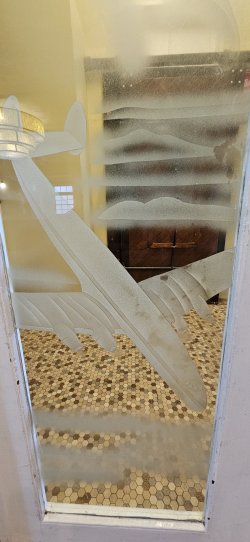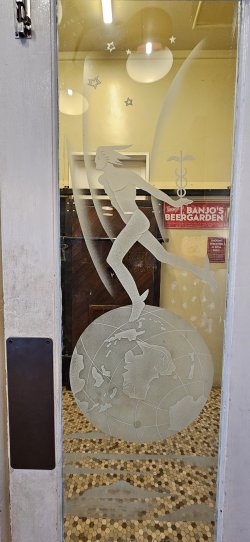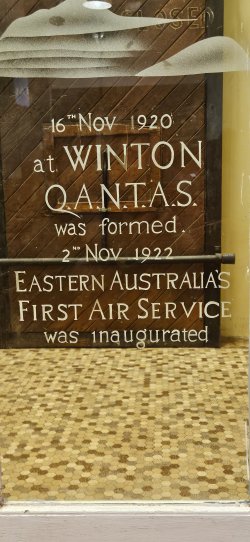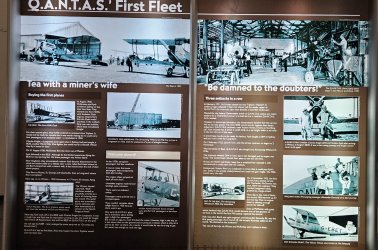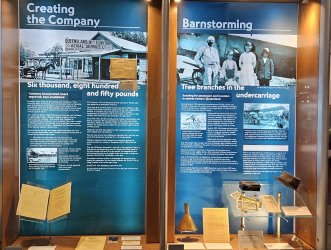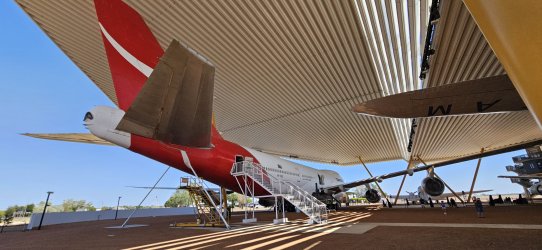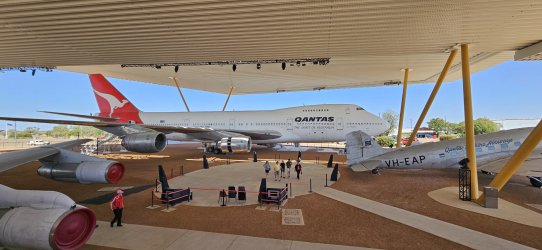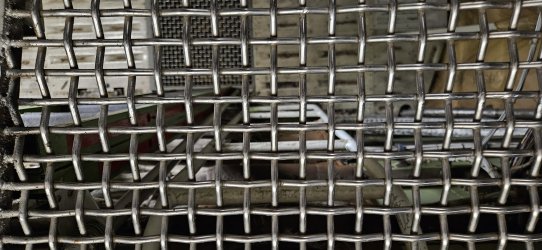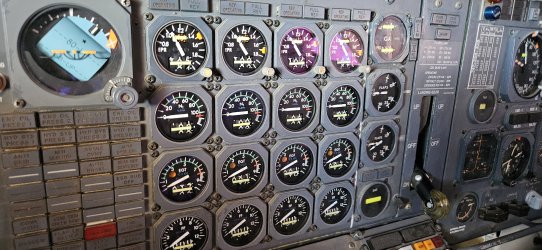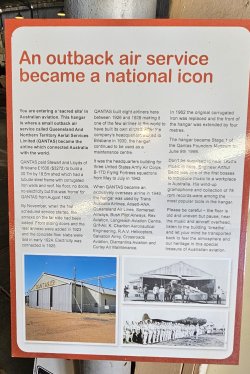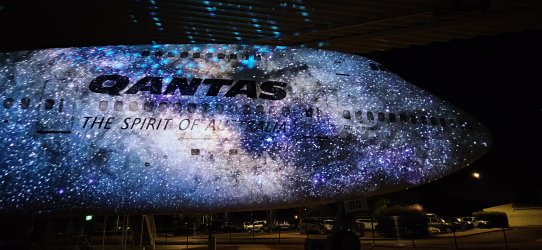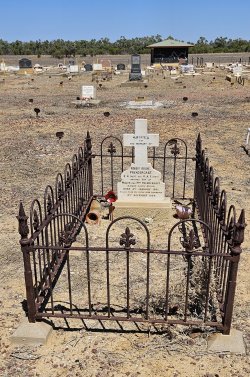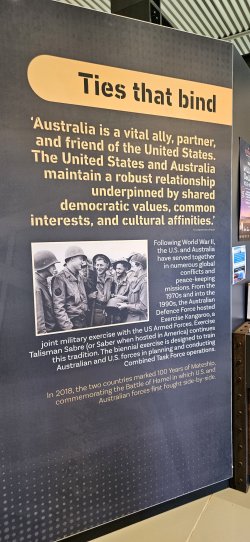Recently did a 5500kms road trip out to western Qld, firstly the Dinosaur Trail, then Longreach, Qantas Museum, Stockmans Hall of Fame etc, into Brisbane to visit some friends and home. This is about the Qantas Founders Museum part of the trip.
Most Aussies probably know a bit about the history of Qantas and like me are quite proud of our iconic National Airline. I guess other people hate it just as much...you can leave now.
Paul McGinness and Wilmot Hudson Fysh were both veterans of Gallipoli when they met in the newly formed Australian Flying Corps in 1918, McGuinness was the pilot and Fysh the Gunner/Observer, just before the war ended Fysh also qualified for his pilot's license. After surviving the war as decorated aviators they returned home and being at a loose end the two decided to enter the Great Air Race for its 10000-pound prize money and to be the first to fly from Great Britain to Australia.
Unfortunately, their wealthy sponsor died before the race began and they could not enter, however the Australian government gave them the job to prepare (ie build as none existed) the landing fields for the upcoming race. Their section was from Longreach to Darwin. Off they set in a model T Ford with a mechanic and invented roads, basically following Leichardts route and took the car where none had gone before. They succeeded and built airfields and Fysh was in Darwin as the governments representative to welcome Ross and Keith Smith, the Race winners. Ross Smith was his former CO in the war and asked him where his uniform was.
Job done, they both remarked that flying was the best way to travel the vast distances of the outback, especially in the wet season when roads disappeared for months into a boggy soup, and had the idea to start an air service. McGuinness had helped wealthy, well connected grazier Fergus McMaster out of a bog and he was in on their idea as well. They formed Queensland And Northern Territory Aerial Services after a meeting at the Gresham Hotel in Brisbane and it was registered as a company in Winton on 16 November 1920. One meeting was held at the Winton Club but soon the office was moved to Longreach.
But barnstorming and joyflights would not pay the bills, and luckily the company won the new government mail delivery contract. Planes got bigger and could go further with more passengers and more routes were added, along with more mail contracts. They partnered with Imperial Airways for the new England to Australia mail/passenger route and formed Qantas Empire Airways. These early flights involved flying boats for the overwater sections and normal planes for the over land parts.
WW2 intervened and Qantas lost many of its planes and pilots.
After the war ended, the government nationalised QEA, and gave the domestic routes to the new TAA and the ANA/Ansett duopoly. QEA now government owned and backed, which was the way most countries were going, could now buy larger more expensive planes and expanded in every direction. With the the coming of the jet age and the Boeing 707 you could now get to England in 24 hours.
The museum stops about this time period as I guess most people can remember the rest.
The North Gregory Hotel Winton, this is hotel number 4 on the site but no doubt Qantas business was discussed in Winton in the early days. The first public reading of Waltzing Matilda was here as well.

QANTAS Monument out the front. Fergus McMaster was a local and his support no doubt helped other locals invest in the new company

Winton Shire Council cleared a landing site for Qantas

The AVRO 504K, their first plane.

One AGM meeting was held here as this was where the first registered office was.

Only open on Friday nights.

Through the glass door




Most Aussies probably know a bit about the history of Qantas and like me are quite proud of our iconic National Airline. I guess other people hate it just as much...you can leave now.
Paul McGinness and Wilmot Hudson Fysh were both veterans of Gallipoli when they met in the newly formed Australian Flying Corps in 1918, McGuinness was the pilot and Fysh the Gunner/Observer, just before the war ended Fysh also qualified for his pilot's license. After surviving the war as decorated aviators they returned home and being at a loose end the two decided to enter the Great Air Race for its 10000-pound prize money and to be the first to fly from Great Britain to Australia.
Unfortunately, their wealthy sponsor died before the race began and they could not enter, however the Australian government gave them the job to prepare (ie build as none existed) the landing fields for the upcoming race. Their section was from Longreach to Darwin. Off they set in a model T Ford with a mechanic and invented roads, basically following Leichardts route and took the car where none had gone before. They succeeded and built airfields and Fysh was in Darwin as the governments representative to welcome Ross and Keith Smith, the Race winners. Ross Smith was his former CO in the war and asked him where his uniform was.
Job done, they both remarked that flying was the best way to travel the vast distances of the outback, especially in the wet season when roads disappeared for months into a boggy soup, and had the idea to start an air service. McGuinness had helped wealthy, well connected grazier Fergus McMaster out of a bog and he was in on their idea as well. They formed Queensland And Northern Territory Aerial Services after a meeting at the Gresham Hotel in Brisbane and it was registered as a company in Winton on 16 November 1920. One meeting was held at the Winton Club but soon the office was moved to Longreach.
But barnstorming and joyflights would not pay the bills, and luckily the company won the new government mail delivery contract. Planes got bigger and could go further with more passengers and more routes were added, along with more mail contracts. They partnered with Imperial Airways for the new England to Australia mail/passenger route and formed Qantas Empire Airways. These early flights involved flying boats for the overwater sections and normal planes for the over land parts.
WW2 intervened and Qantas lost many of its planes and pilots.
After the war ended, the government nationalised QEA, and gave the domestic routes to the new TAA and the ANA/Ansett duopoly. QEA now government owned and backed, which was the way most countries were going, could now buy larger more expensive planes and expanded in every direction. With the the coming of the jet age and the Boeing 707 you could now get to England in 24 hours.
The museum stops about this time period as I guess most people can remember the rest.
The North Gregory Hotel Winton, this is hotel number 4 on the site but no doubt Qantas business was discussed in Winton in the early days. The first public reading of Waltzing Matilda was here as well.

QANTAS Monument out the front. Fergus McMaster was a local and his support no doubt helped other locals invest in the new company

Winton Shire Council cleared a landing site for Qantas

The AVRO 504K, their first plane.

One AGM meeting was held here as this was where the first registered office was.

Only open on Friday nights.

Through the glass door











